Publishing early in recognition of the arrival on the red planet of NASA's Mars Science Laboratory (MSL) Curiosity Rover, this week we talk to members of the mission team, revisit some previous successful planetary explorations and hear how UK engineers have made it possible for Rovers to think for themselves. Plus, news of why planets orbit in a plane and whether elephants purr, or just hum...
In this episode

- Cancer stem cells uncovered
Cancer stem cells uncovered
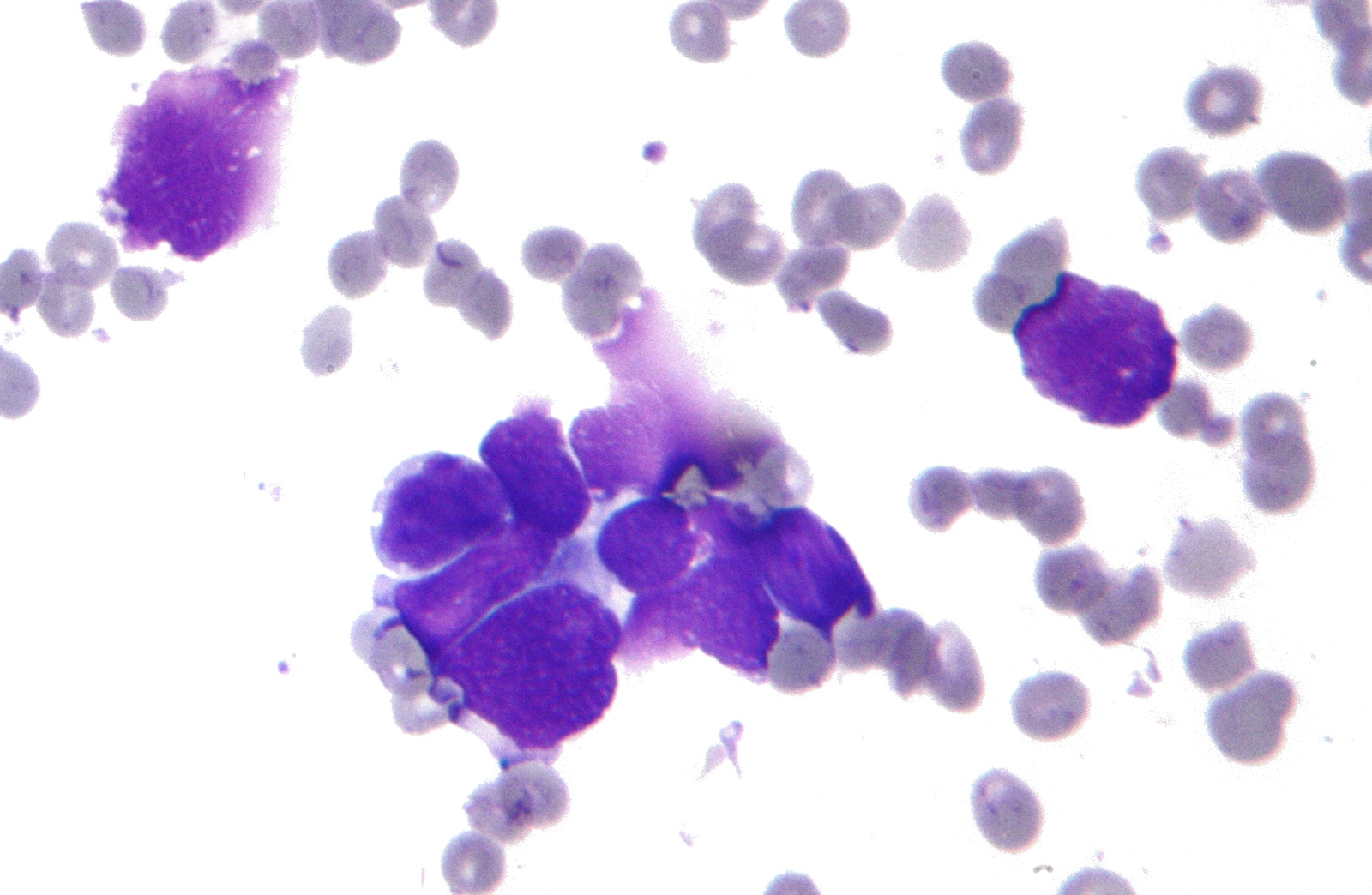 For the first time scientists have confirmed the existence of tumour stem cells that underpin the proliferation and recurrence of cancers. A paper published this week in the journal Science, in which Dutch researcher Hans Clevers and his colleagues at the Hubrecht Institute have followed cancers forming in-situ in experimental mice, provides the strongest evidence yet for the existence of cells with stem cell-like properties.
For the first time scientists have confirmed the existence of tumour stem cells that underpin the proliferation and recurrence of cancers. A paper published this week in the journal Science, in which Dutch researcher Hans Clevers and his colleagues at the Hubrecht Institute have followed cancers forming in-situ in experimental mice, provides the strongest evidence yet for the existence of cells with stem cell-like properties.
The team used a clever genetic trick to trigger a known cancer-causing mutation in the APC gene carried by a small number of intestinal cells; at the same time, cells in which this change was induced also began making a coloured marker meaning that their fates could be followed subsequently. Predictably, the animals developed tumours called adenomas, the cells in which all showed the coloured marker, indicating that one parent cell must have produced them.
But this alone doesn't prove that the tumours came from, or contain, stem cells. To demonstrate this the team used a further genetic trick. The original labelling technique they had employed also enabled them, by administering a dose of the drug tamoxifen, to flip the colour of the label, for instance from red to blue, in a small number of the tumour cells. When tumours were examined a day after this was done, single cells of the new colour were seen in some of the cancers. But animals studied 6 days later showed a ribbon of blue cells extending from the base to the apex of the tumour, and by 24 days up to 30% of the tumour bulk comprised cells of the new colour. Analysis of these cells showed them to be of several different cell types, indicating that whatever gave rise to them had stem cell characteristics.
Further tests showed that about 5% of the new cells also had a marker called Lgr5, which is carried by intestinal stem cells that renew the gut lining. This shows that the stem cell that produced the new tumour cells was also producing a subset of new stem cells. Transplanted into a dish, these stem cells, but not the other tumour cells, were capable of regrowing tumours. Others have claimed to have discovered cancer stem cells previously, but these studies have been based largely on tissue transplanted, in the presence of various growth factors, into immune-suppressed animals. The approach of Clevers and his colleagues, to study tumours developing in situ, bypasses this problem. Now scientists can begin to ask how to selectively target these stem cells, and turn them off.
Schepers, A. G. et al. Science
http://dx.doi.org/10.1126/science.1224676 (2012)

01:32 - The Mars Science Laboratory
The Mars Science Laboratory
with John Grotzinger & David Blake, NASA
Chris - In November 2011, one of NASA's most ambitious missions yet, mounted to explore Mars, blasted off destined for the red planet carrying a mini cooper-sized science mobile laboratory called Curiosity. But how do you land something the size and weight of a car on a planet millions of miles away? When Curiosity launched, I spoke with NASA's Mission Chief Scientist, John Grotzinger to find out.
John G. - To begin with, we launched and then on the cruise from Earth to Mars, there's a solar array which keeps the rover charged. It will take us about 8 months and then we begin to feel the pull of the gravitational field and we enter the planet's atmosphere and begin to descend. But this time, in contrast to previous Mars landed missions, the aero shell which is the bit that you see in these videos that's sort of screaming along with flames shooting out beneath it, it's actually able to fly a bit like an aeroplane wing, and then there are thrusters that are activated to allow it to correct the trajectory. And so, instead of plunging vertically through the atmosphere, it's actually coming down at quite a low angle. And then, when it decelerates to about mach 2, it deploys the parachute and that slows it down even further. And then when we get down to maybe a kilometre above the surface, the heat shield falls away and from that now, everything gets very different from previous missions. We now have a fourth spacecraft called the powered descent vehicle, and the powered descent vehicle has 8 rocket thrusters and beneath it is attached the rover, pretty much ready to go, with the wheels hanging down. The descent stage then will drop down. The thrusters will push against the gravitational pull of Mars until it hovers 20 meters or so above the surface. Then it reels the rover out on a set of cables down to the surface of the planet, and then the cables are cut, and the descent stage goes off, crash lands. And the rover, pretty much it lands ready to go as a result of that process.
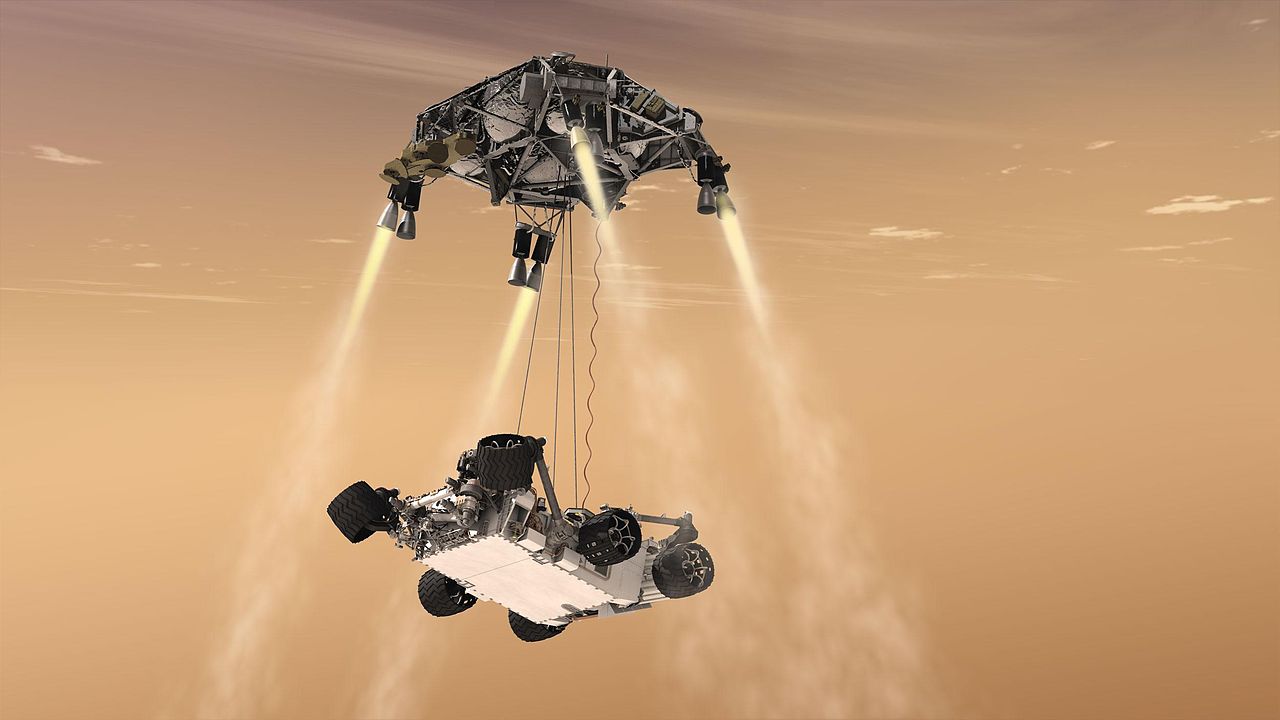 Chris - Not surprisingly, NASA's scientists are dubbing the landing process "7 minutes of terror." But what will Curiosity be looking for and how? With us now is NASA's Dr. David Blake who is also working on the mission. Hello, David.
Chris - Not surprisingly, NASA's scientists are dubbing the landing process "7 minutes of terror." But what will Curiosity be looking for and how? With us now is NASA's Dr. David Blake who is also working on the mission. Hello, David.
David - Good morning.
Chris - You're in mission control of course in California.
David - Yes.
Chris - Now, where is Curiosity's landing site?
David - We're going to land at a place called 'Gale Crater', one of the oldest, biggest, and deepest craters in the surface of Mars. So simply put it's a place where a lot of sediment and water could've accumulated very early in Mars history.
Chris - When you land there, what will you actually do? Is it just one giant crater or is there any specific set of structures that you'll be trying to examine?
David - There's just a whole bunch of stuff to look at. The central mound of Gale which is 5,000 metres tall is basically made up of sediments that were deposited under the influence of water, either lakes or streams, or something like that maybe as early as 4 billion years ago. So we're going to be going up through that sediment a layer at a time, just like reading a book and determining the early environments that happened on the Mars surface, maybe 4.5 or rather 4 to 3.5 billion years ago.
Chris - So, it's the way of retracing Mars' history without actually having to go too far. So, is there effectively a mountain in the middle of the crater? How did you get this strange structure?
David - So, Gale Crater - first, there's a big impact base and it's very deep. It's 4 km below the present average surface of Mars and effectively, this crater was in-filled with sediment to the point where the entire crater was inundated and filled above the brim and then later on over the next billion or 2 billion years by erosion, a lot of that material was eroded away. So we're left with this remnant, this erosional remnant mountain of the original in-fill of the Gale Crater.
Chris - Was that water then that was moving things around to fill in and then re-erode the crater?
 David - Not so much the erosional part, but certainly the in-filling part. We have definite evidence of hydrated minerals and things that look like where liquid flowed. So, we're pretty much sure that water was associated with the deposition of the sediments, but I think maybe the erosion was created more by wind over billions of years.
David - Not so much the erosional part, but certainly the in-filling part. We have definite evidence of hydrated minerals and things that look like where liquid flowed. So, we're pretty much sure that water was associated with the deposition of the sediments, but I think maybe the erosion was created more by wind over billions of years.
Chris - And Curiosity would drive towards this, I suppose timeline of sediment, and start sampling each in turn?
David - Yeah. The landing ellipse, the centre of it is going to be within 6 km of the beginning of the Gale mount, Mount Sharp. And we know from orbiting data, from orbital images, that there's very finely divided sediment that contains clays, and hydrated sulphates, and things like that embedded and this is exactly the place that we want to go.
Chris - So talk us through how Curiosity actually works because it's a huge rover. What's going on inside it? What's it going to do with the sediments that it picks up?
David - Well, it is big. I've stood beside it and it towers over me. Now, the MER rovers which one is still operating on Mars, were kind of like field geologists and they would go out and sample a rock, look at a rock, do something with the arm instruments, but it really didn't have a laboratory to do anything other than that. So, Mars Science Laboratory has not only a field geologist's tools, but also, there's a whole full up laboratory inside the rover to do laboratory quality analysis. So, once we look out and see a sample, there's just a wide variety of instruments. The mast has telephoto cameras in colour. It has something called 'camcam' which is kind of like a Star Wars type of a deal. It fires off a pencil thin laser beam which makes a plasma of rock as much as 7 metres away and then it images that little plasma plume in the infrared and it tells you what elements are present there. So, we can kind of zap rocks as we go along and say, "Hey, let's go over there. That's look like an interesting rock or outcrop." And then once we get there, we've got something like a little geologist's hand lens to put down there that gets very high resolution colour images. We have something that was also on the MER rovers, an APXS which tells us the elements that are present in the rock, and then we have a drill which unlike the MER rovers, we can actually drill down about 5 cm into a rock and take that powder or take a scoop of powder from the ground and deliver that to our two laboratory instruments. And the two laboratory instruments - one's called 'CheMin' for chemistry and minerality - that's my instrument and it will tell you the minerality of whatever is given to it. And the other is called SAM, and SAM is really 3 instruments. It's a mass spectrometer, a gas chromatograph, and a laser spectrometer, and that's going to tell us the nature of any organic compounds that are present in the soil.
Chris - So, you will spot interesting things across this timeline, you can work out roughly when in Mars's history each of the samples you're processing has come from, and you can then probe it for what chemicals are there. This means you can then do interesting geology to work out what Mars's history was when it was wet, when it was dry, maybe some clues about the magnetic field for example. But NASA have denied that this is a life-finding mission. Why have NASA gone down that path?
David - Well, that's kind of a perilous position to take because life, people kind of think of, well, we either found it or we didn't find it. And we are looking for habitable environments, that is environments that would be clement for life to have formed or persist, and that means as far as we know, we're kind of myopic because we only know of one type of life, and that's Earth life. We want a place where water is present. We want a place where energy could've been where rocks are being dissolved and re-precipitated and producing a bit of energy, and we want a place where organic materials could persist. So we want all of those things together and a temperature that's kind of a clement environment for life. So that's kind of what we're looking for.
Chris - But at the same time, we know what the signatures that go with Earth-type life are. If you spotted those sorts of signatures, would you be able to say, well, that looks like life. Similarly, if you were to land Curiosity in the middle of the desert on Earth, would it conclude that Earth is a place where life exists on the basis of the measurements that we're taking?
David - Well, that's a good question. On Earth, life has just captured every part of the planet so, if we go to the most desolate parts of the planet and if we took these instruments and took a sample and analyse it, we would find life. I don't care where you go - the Atacama desert, Antarctica - it would be difficult to sample a place where you couldn't find some evidence of organic compounds that would indicate life. Now Mars isn't quite so replete that we know of with life. We don't see anything like that, so we're really looking for chemical signatures for organic molecules that might suggest that either life or the precursors of life would've been there.
Chris - We got to start somewhere, haven't we? David, thank you very much. That's David Blake. He is one of NASA's scientist working on the Mars Science Laboratory mission.
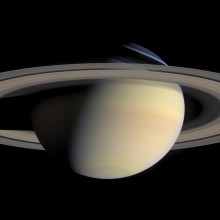
11:33 - Exploring Our Solar System
Exploring Our Solar System
with Professor John Zarnecki, Open University
Dominic - Now, we've been hearing about the challenges of landing rovers on Mars, but there have also been missions to land probes elsewhere in the solar system and each environment brings its own challenges.
In 2004, the Huygens probe landed on Saturn's moon Titan, taking the first images of the surface of such a distant body. And the key architect to that mission was the Open University's Professor John Zarnecki, who joins us now. Now John, first of all, tell us a bit about Huygens and what it saw as it descended towards the surface of Titan?
John - Well, you should realise that we'd never seen the surface of Titan because Titan is shrouded in this photochemical smog and as we descended through the clouds, for a long time, we saw nothing at  all. But then from about 15 km, we started to get an indication of the surface, and we saw what looked like river channels. In fact, it's what's called a dendritic system. So a system of rivers and tributaries, and so on. Then we landed, and we saw an undulating vista with pebbles and small rocks. But what you have to understand is that Titan is an icy world, so we were seeing in fact things that looked familiar like hills and channels, and pebbles, and so on. But these were not made of rocks and carved by water as on Earth, but the basic building block was ice, and the liquid is liquid methane and liquid ethane.
all. But then from about 15 km, we started to get an indication of the surface, and we saw what looked like river channels. In fact, it's what's called a dendritic system. So a system of rivers and tributaries, and so on. Then we landed, and we saw an undulating vista with pebbles and small rocks. But what you have to understand is that Titan is an icy world, so we were seeing in fact things that looked familiar like hills and channels, and pebbles, and so on. But these were not made of rocks and carved by water as on Earth, but the basic building block was ice, and the liquid is liquid methane and liquid ethane.
Dominic - Like camping gas. It sounds like you wouldn't want to drop a match into one of these lakes!
John - Yes and no. I mean, because of the temperature, it's very cold there, about minus 180 degrees so there isn't, we think, any free oxygen. So, you'd probably be safe dropping a match, but it's not an experiment I'd like to do.
Dominic - Now I remember following this mission in 2004 and it seemed rather the same after - I think it took you 7 years to get there - This only operated for 3 hours as it descended into the atmosphere. Why couldn't you have made this a longer mission?
John - When in fact, 3 hours was far, far longer than we expected. We were sort of planning on 3 minutes, so 3 hours was a great luxury. It was fundamentally an atmosphere probe. So, it was a bonus getting any time, and any data on the surface. You have to understand, this was incredibly challenging technically. We didn't know if we'll be landing on ice, whether we'd be landing in a hydrocarbon sea. So it was very difficult to design for survival on the surface. So for that reason, it was all focused on atmosphere measurements. But now that we know much better what Titan is about, we want to go back and actually survive for a long time on the surface.
Dominic - Now, I'll asked you in a moment about the time mission which I know you're working on at the moment, but first of all, in the nearer future, I know there are other interesting environments where the European Space Agency is hoping to land, including on the surface of a comet in 2014. Tell me a bit about that.
John - Yes, indeed. Well, this is a mission called Rosetta which has been flying for 8 years already and it is again, a very ambitious mission to land on the surface of a cometary nucleus. The comet, it's not a household name like comet Haley. This is comet Churyumov-Gerasimenko. We tend to call it comet CG and in 2 years' time, Rosetta is going to go and orbit around this comet and deliver a lander onto the surface. Now that's a real challenge because a comet, it's a small object, maybe 10 km across. So there's virtually no gravity. So the real challenge there, apart from getting there and getting to the surface, is actually staying on the surface.
Dominic - Now I guess as with your descent onto Titan with the Huygens probe, you have very little idea actually what you're going to find when you get that, what kind of surface you'll be touching down onto?
John - That's a very good point indeed and in fact, the instruments and in particular the harpoon which is going to try and snare the probe onto the surface of the comet, is designed for a surface which has got anything which can vary between candy floss or concrete in terms of hardness and consistency. We are that uncertain as to what we'll actually be landing on.
Dominic - So you might even sink in.
John - We could. So, just put the date in your diary, November the 10th, 2014 about 10:30 in the morning.
Dominic - Now I'm sure we'll look forward to that. Now I know there were a couple of missions to land on icy moons in the outer solar system that you are interested in at the moment. First of all, JUICE. This is the Jupiter Icy Moons Explorer. Tell me a bit about those moons.
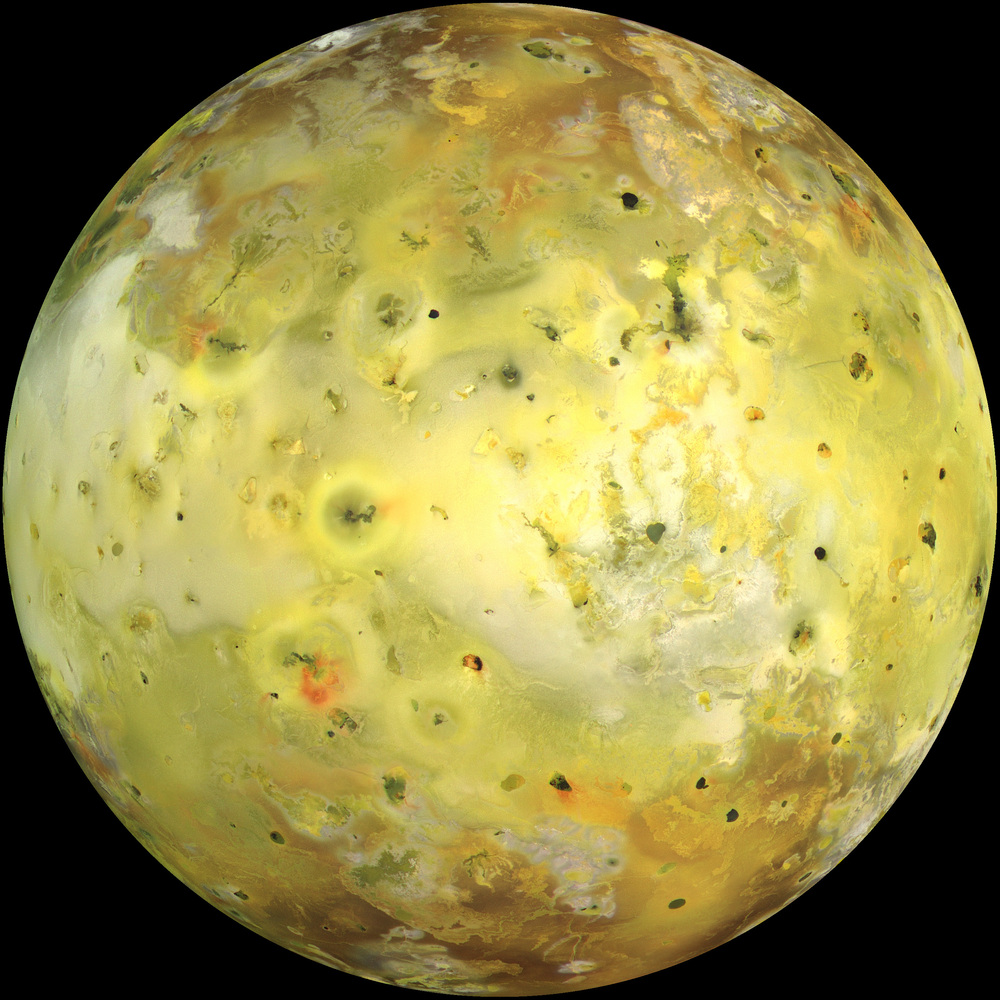 John - Okay, well, we're finding that actually perhaps that in the - as far as the giant planets are concerned - Jupiter and Saturn - it's the small icy moons which go around these giant planets that actually might be more interesting than the giant planets themselves. These are small bodies, but it looks increasingly as if a lot of them actually have subsurface oceans. And so, this mission JUICE as it's called - I hope we come up with a better name before we launch it - it's not going to land, but it's going to go into an orbit around Jupiter and it will have several closed passes of several of these moons. So, it's the start of our really deep investigations of these strange icy worlds.
John - Okay, well, we're finding that actually perhaps that in the - as far as the giant planets are concerned - Jupiter and Saturn - it's the small icy moons which go around these giant planets that actually might be more interesting than the giant planets themselves. These are small bodies, but it looks increasingly as if a lot of them actually have subsurface oceans. And so, this mission JUICE as it's called - I hope we come up with a better name before we launch it - it's not going to land, but it's going to go into an orbit around Jupiter and it will have several closed passes of several of these moons. So, it's the start of our really deep investigations of these strange icy worlds.
Dominic - Now I know you're interest is with the time mission which will hopefully take off and visit Titan again in 2016 or it will take off in 2016. I gather there's a real problem on how to power something that far-out in the solar system?
John - Well, yes that is always the case. We're so far away from the sun that we can't really use solar cells. So, we use plutonium to generate electricity. But this is a really exciting mission if it's selected, and we should know later this month, it's in competition with two others. The aim is to put a probe directly into one of the seas on Titan because now, we know where they are. As with Huygens, we didn't know anything about the surface.
Dominic - I'm sure we'll keep our fingers crossed with you with that selection process. That was Professor John Zanecki of the Open University.

18:30 - The violent histories of hot Jupiters
The violent histories of hot Jupiters
A paper published in Nature last week has discovered that planetary systems containing so-called hot Jupiters are likely to have had violent pasts.
The evidence stems from a difference in the way that these planets orbit their parent stars. In our own solar system, the planets orbit the Sun in very similar planes, so that any three-dimensional model of the solar system looks rather like a dinner plate, with all of the planets orbiting in the surface of the plate. In addition, the Sun's own rotation axis is closely aligned with the orbits of the planets.
 This alignment is as we would expect from our understanding of how planetary systems form. We think that both stars and planets form from proto-planetary discs -- clouds of gas and dust that collapse under their own gravity, flattening into a swirling disk. The central part of such a disk forms a star, while the outer parts may form into a number of planets around it. Since both the star and the orbits of its planets derive their rotation from the same disk, we would expect them both to be aligned with the disk's original rotation axis.
This alignment is as we would expect from our understanding of how planetary systems form. We think that both stars and planets form from proto-planetary discs -- clouds of gas and dust that collapse under their own gravity, flattening into a swirling disk. The central part of such a disk forms a star, while the outer parts may form into a number of planets around it. Since both the star and the orbits of its planets derive their rotation from the same disk, we would expect them both to be aligned with the disk's original rotation axis.
However, the pattern seen in our own solar system has not been reproduced by other planetary systems that we have observed. These systems often have large Jupiter-sized planets orbiting very close to their parent stars, at a similar distance to that of Mercury from our own Sun. Moreover, the orbital planes of these so-called "hot Jupiters" are almost randomly orientated, showing little correlation with the rotation axes of their parent stars.
It is a puzzle how these systems form, and astronomers think it likely that these Jupiter-sized planets form much further out from their host stars, but later migrate inwards, perhaps as a result of violent gravitational interactions with their neighbours or with nearby stars.
Writing in Nature, Roberto Sanchiz-O'Jeda of MIT and his colleagues present the first observations of the orbits of the planets in a more normal system, as observed by the Kepler Space Telescope. They find that this system, like our own, has the planets orbiting in a common plane which is aligned with the host star's rotation axis.
The implication is that planetary systems do indeed form with their planets orbiting in a common plane, but that violent interactions can upset the orbital alignment. This confirms the theory that hot Jupiters do not form in their present locations, but migrate inward as a result of violent events in their histories.

22:12 - Do elephants purr?
Do elephants purr?
 The way elephants make the low-frequency rumbles they use to communicate over long distances has been revealed by scientists in Austria. Humans and other mammals use sound extensively; whales and elephants produce frequencies as low as 9Hz, and some species of bat are capable of ultrasound frequencies exceeding 110,000Hz.
The way elephants make the low-frequency rumbles they use to communicate over long distances has been revealed by scientists in Austria. Humans and other mammals use sound extensively; whales and elephants produce frequencies as low as 9Hz, and some species of bat are capable of ultrasound frequencies exceeding 110,000Hz.
In all of these cases, these vocalisations are produced by passing air over the vocal folds, making them vibrate. But there are two ways to produce sounds like this. One is known as myoelastic aerodynamic noise production and is the means by which we speak and sing. To make these sounds we close the vocal cords or "glottis" and apply push air from the lungs against them. At a certain pressure the vocal cords part and a rush of air ensues. This causes the pressure to drop and the vocal cords then come together again, re-starting the process and setting up vibrations that resonate in the mouth and throat.
Purring, on the other hand, which cats typically do, involves rhythmic opening and closing of the vocal cords under nervous control at the rate of about 30Hz. This creates surges of air through the alternately open and closed glottis and sounds of the same frequency.
But do elephants do this to produce the human-inaudible infrasonic noises they are known to emit? To find out, Christian Herbst and his colleagues at the University of Vienna took advantage of the natural death of an elephant at a Berlin zoo to study the the animal's larynx. The team excised the entire elephant voicebox and connected it to an artificial lung to push in air. They closed the vocal cords by bringing together the supporting cartilage structures called the arytenoids, as would occur in life, and placed sensors to record sound production and the contact between the vocal cords.
Isolating the vocal cords from their air supply like this means that purring is impossible, so any ensuing sound must be being produced by myoelastic-aerodynamic means. As they turned up the pressure to about 4 times would it takes to vibrate a human voicebox, the elephant larynx started making sounds of about 16Hz, close to the 20Hz frequency of infrasounds recorded from living elephants in the wild. High-speed photography confirmed that the vocal cords were repeatedly opening as pressure built up and then closing again at air passed through, setting up vibrations in the tissue.
Concluding their paper in Science this week, the team point out that this study is the first to directly observe the sound production mechanism of elephant infrasound vocalisations. "We have shown that low-frequency phonation can be created by flow-induced self-sustaining oscillations of the vocal folds, in accordance with the myoelastic-aerodynamic theory of voice production." But the team also caution that they cannot rule out the possibility that elephants can also purr. But there proabably aren't many brave enough to volunteer to implant the electrodes that would be required to find out...
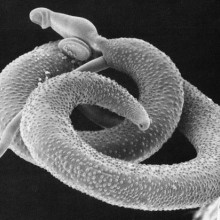
25:24 - Building an Immunity to Bilharzia
Building an Immunity to Bilharzia
with Dr Kate Mitchell, Edinburgh University
Chris - Schistosomiasis is also known as bilharzia and it is a disease that's caused by worms, and they grow for part of their lives in a species of aquatic snail, and they then infect humans that are exposed to water where those snails live. More than 200 million people are infected and in the majority of cases, people carry the worms for many years and this leads to damage to organs inside the person including damage to their bladder and also to their liver. Adult humans eventually develop immunity to the infection but for some reason, children don't. Now, scientists have discovered why and this could help us to develop a new vaccine. Kate Mitchell who carried out this work while she was a PhD student at Edinburgh University is the scientist behind the breakthrough. Hello, Kate.
Kate - Hello.
Chris - So, how did you actually do this?
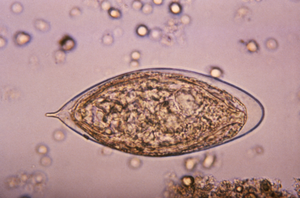 Kate - We took a fresh look at several decades worth of data that's being collected by many people and looking at infection levels and antibody levels in different populations. And then we used new computer models that we've developed to investigate a number of different ideas that people have about how protective immunity develops to schistosomiasis. And so, we took a number of these different theories and ideas, and used these to construct different models and we had almost 3,000 models in total that we looked at quite systematically and then we ran millions of computer simulations to see whether the models could produce the patterns that we see in the field data.
Kate - We took a fresh look at several decades worth of data that's being collected by many people and looking at infection levels and antibody levels in different populations. And then we used new computer models that we've developed to investigate a number of different ideas that people have about how protective immunity develops to schistosomiasis. And so, we took a number of these different theories and ideas, and used these to construct different models and we had almost 3,000 models in total that we looked at quite systematically and then we ran millions of computer simulations to see whether the models could produce the patterns that we see in the field data.
Chris - What were the hypotheses that you started with? What sorts of questions or possibilities were you playing with or modelling when you started?
Kate - So, one of the main ones we're interested in was, there's a theory that it's only when the adult worms die that they release the right proteins that could stimulate an immune response. The worms live for several years inside humans so that could be delaying the exposure. So we looked at that as one of our hypotheses but we also wanted to check, well what happens if actually, those proteins are coming from other stages of their life cycle so the infectious stage, when you're initially infected or the eggs that worms lay. And we also weren't sure what the effect of the protective immune response is - is it preventing people from becoming re-infected? Is it killing the worms directly? Or is it stopping them laying the eggs? It's the eggs that cause a lot of the damage that we see. So we looked at all those different combinations. There are also different ideas about the precise nature of the immune response, how long the worms live for, that kind of thing.
Chris - Where did you get the data to then test these theories against?
Kate - So we had several large field tests that as our group at the University of Edinburgh has conducted in Zimbabwe over the last 20 years or so. Data from different populations where we had measured infection levels and antibodies in children and adults in these communities. We also used published data from Zimbabwe and other African countries going back as far as the 1960s.
Chris - So, you had all these hypotheses, you had built clever models that enable you to test all the possibilities so you'll know what the outcome should be if that possibility is right. You then compare that with the data and see if it fits the pattern you would expect if that hypothesis is true. What emerged as the thing that you think is the reason why the adults get the immunity eventually and then spit out the worms? Not really obviously, they suppress the worms. I don't want to give anyone nightmares, but children don't. What's going on?
Kate - So, we actually got a very clear answer and it related to some of these theories that I outlined earlier. The protective response, the one that's actually protecting against disease is triggered by proteins that are released when the adult worms die. And this is stimulating antibody responses. And what those antibodies are actually doing is preventing the remaining worms from laying any further eggs. And the reason why this is usually only seen in adults is just because it takes a long time to actually get enough exposure for enough worms to die and trigger enough response for it to be effective.
Chris - Because the worms themselves can suppress the immune system, they sort of evade the immune system so that the immune system can't see them. They're mostly invisible, cloaked to the immune system when they're alive and it's only when they die, that that cloaking device (for want of a better phrase) breaks down and the immune system can see the worm and make a response to it. That response is then effective at stopping other worms that are alive, making any eggs.
Kate - Partly. So, that was one hypothesis that we tested. Are the worms just suppressing this protective response? And actually, that wasn't really giving us results that were consistent with the data. So they certainly are suppressing some responses. I mean, there are all sorts of immune responses going on. There are a lot of inflammatory responses to the eggs, so we suspect the suppression is of an early response that would damage the worms. But the response that we're detecting here with these models is a protective response. It's a different response that is just taking an awful lot of time to build enough exposure.
Chris - If it takes a long time, what is the prospect then of being able to make some kind of vaccine that will make a child make that response? So that if they are exposed to the snails in the water, and the worm is trying to infect them, it wouldn't be able to?
Kate - It's probably part of a question of quantity and identifying the correct proteins that you need to put into your vaccine to create the right response.
Chris - But this would suggest that it is possible. So, if we can simulate what happens to an adult given enough time in a child, we would be able to protect the child potentially against bilharzia.
Kate - Yes, that would be the aim.
Chris - Let's hope so. Thank you very much. That's Kate Mitchell. She's now working at London School of Hygiene and Tropical Medicine. She was talking there about the work she did towards her PhD when she was at Edinburgh University.

30:52 - Black holes, as revealed by X-rays
Black holes, as revealed by X-rays
This week, the journal Science have produced a special issue dedicated to the subject of black hole research, and Rob Fender of the University of Southampton reviewed what we know about the X-ray emission of black holes.
Black holes are the collapsed end state in the lives of stars more massive than a few times the mass of the Sun. When these stars run out of fuel, no force can overcome the gravitational self-attraction of their cores, which consequently collapse down to an infinitely small point in an event called a Type II supernova explosion. The result is a black hole with a mass of a few times that of the Sun.
It is estimated that there are likely to be at least 100 million such black holes in our galaxy, based on the number of massive stars that we see today, and their estimated lifetime of a few million years. Yet although this makes them quite common objects, they are very difficult to observe as not even light can travel fast enough to escape from their surfaces.
The tell-tale sign of a black hole is X-ray emission, produced whenever gas falls in towards the event horizon. In the process of spiralling in towards its ultimate fate, this gas reaches incredibly high temperatures and densities as it is compressed into an ever smaller space. At temperatures of hundreds of millions of degrees, it doesn't just glow red hot, it glows X-ray hot. The energy required to heat gas to these temperatures is so great that almost all processes other than the accretion of material onto a black hole can be ruled out in such objects.
However, this X-ray emission is only produced if the black hole happens to have a source of gas falling onto it. Most of the Milky Way galaxy is a deep vacuum, with stars no closer than a few lightyears apart. So it is only those black holes that have close companion stars that can accrete gas at a significant rate, by gradually stripping the outer layers of gas from their companions.
Moreover, the accretion process is so violent that it is rarely sustained. Instead, black holes undergo fits of accretion, accompanied by explosive outbursts, which then prevent any further accretion from taking place for many months, or perhaps even many centuries. This means that in the past few decades of black hole research, we have only seen the tip of the iceburg of the Milky Way's black hole population.
Significant questions remain. We know that there is a supermassive black hole at the centre of the Milky Way which has a mass of several million times the mass of the Sun, and it appears that most other galaxies also have similarly sized black holes at their centres. How do these black holes acquire so much mass? They must have found an acretion mode which is much faster than simply munching on the outer envelopes of close companion stars.
Another interesting problem is that some galaxies, known as active galaxies, have intensely bright nuclei, understood to be powered by a flow of gas onto the central black hole. Others, like our own galaxy, appear not to have any flow of gas onto their central black holes. Why is this so? Do supermassive black holes have episodes of accretion similar to their stellar mass counterparts? It appears likely that they do, on a vastly enlarged scale.

35:17 - Alzheimer's Protein Relieves MS Paralysis
Alzheimer's Protein Relieves MS Paralysis
with Lawrence Steinman, Stanford University; Damian Dowling, Monash University; Rose Thorogood, University of Cambridge; Aaron Johnson, University of Pennsylvania
Alzheimer's protein relieves MS paralysis
A protein found in the brain of Alzheimer's sufferers has been shown to relieve paralysis in mice with the autoimmune disease multiple sclerosis, or MS.
MS is caused by the immune system attacking the protective myelin sheath around nerve fibres in the central nervous system. One symptom is inflammation of the brain, which can result in paralysis.
Lawrence Steinman of Stanford University reports in Science Translational Medicine. "We found in the multiple sclerosis brain a molecule called beta amyloid. This molecule has a famous and villainous role in Alzheimer's disease where most scientists think it's the culprit at the root of the Alzheimer's dementia.
So we attempted to find out what this molecule might be doing by going backward and seeing, "Okay, it's in the MS brain. What it might to do in a mouse model of multiple sclerosis? To our great surprise, the molecule provided great benefit. Animals that were paralysed became better and the inflammation melted away in their brain."
Why women live longer than men
Females outlive males not only in humans, but in many other species as well. According to research in the American Naturalist, this discrepancy could arise from the mechanism of inheritance of mitochondrial DNA.
Damian Dowling and his research team at Monash University have identified mutations in fruitfly mitochondrial DNA that are harmful to males but not females. "What we did was uncover numerous mutations within the genes of mitochondria that cause males to age faster and live shorter lives than females.
The existence of these mutations can be entirely attributed to a quirk in the way that mitochondrial genes are passed down from parents to children. While children receive copies of most of their genes from both their mothers and their fathers. They only receive mitochondrial genes from their mothers.
"The implication is profound. It means that evolution's quality control process only screens the quality of mitochondrial genes when they're inside mothers. So, if a mitochondrial mutation occurs that harms fathers, but has no effect on mothers, this mutation will slip through the gates of natural selection unnoticed."
A new disguise for cuckoos
Cuckoos famously parasitise other bird species by laying eggs in their nests and allowing the host species to raise them. Not only that, but cuckoo chicks have evolved to push out the host's own eggs in order to gain their foster parents' full attention.
Cuckoos also mimic the appearance of predatory grey sparrowhawks, intimidating the hosts out of attacking the cuckoo.
However, one host species, the reed warbler, can learn to recognise disguised cuckoos for what they really are, and will mob them on sight.
Research published in Science by Rose Thorogood of the University of Cambridge shows that the cuckoos are now evolving a counter-attack. A new disguise of a red-brown plumage helps part of the cuckoo population avoid reed warbler mobbings.
"So we know that cuckoos are in a race with their hosts. We know from previous work that reed warblers have learned to defend themselves against cuckoos by watching their neighbours to tell when a grey cuckoo is a grey cuckoo and not the dangerous sparrow hawk. But we also know that cuckoos come in different colours, so we wanted to know if this was yet another cuckoo trick to beat these host defences. So, the most exciting thing of what we found is that the reed warblers actually only learn about the cuckoo morph that they see their neighbours mob. And why this is exciting is it means that they're sharing information amongst each other to try and beat their enemies, but actually, in the process of sharing this specific information, it's in turn selecting for this new cuckoo disguise."
Rex the robot gets a tail
And finally, Aaron Johnson at the University of Pennsylvania has been exploiting a novel way to make robots better at travelling over rough terrain: by adding a tail.
Research at the University of California, Berkeley has helped understand how animals use their tails for enhanced balance and agility.
Johnson has applied these findings to create a tail for a Rex, a six-legged robot who was perfectly capable on flat ground, but needed a little extra help on rougher ground...
"This has allowed Rex to be able to right itself when it's falling. Two examples - one is if you're falling nose down, you're going to hit your face on the ground and maybe break a leg, but instead it kicks the tail and is able to land on all six legs safely. And then the other case maybe starting out level because you're running off of a cliff, but as you run over the edge, you're going to start to pitch downwards. And so, it's able to detect that, kick its tail up and still land on its feet."
And complete with its new tail, Rex is now capable of safely falling nose-first from heights of 2.7 times its own body length.
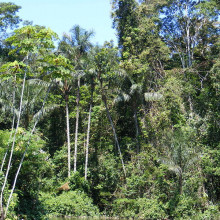
40:39 - The Methane Project - Planet Earth Online
The Methane Project - Planet Earth Online
with Andy McLeod, University of Edinburgh
Chris - In 2006, scientists discovered that plants produce significant amounts of the greenhouse gas, methane. The research caused quite a stir and it led to a rethink about the role of plants and forests in global warming. One of the questions that needed answering is how plants emit methane. And so, a research group at the University of Edinburgh set up the aptly named, 'Methane Project'. Plant Earth podcast presenter Sue Nelson met with Andy McLeod at the University School of Geosciences to find out more.
Andy - The Methane Project is to investigate the mechanisms by which plant leaves can emit the greenhouse gas methane.
Sue - So how do you go about doing that because I don't see many plants here in your laboratory?
 Andy - Well there are no plants here now but what we do is enclose the plant leaves inside chambers and these chambers are specially constructed to transmit ultra violet radiation which you find in sunlight and we use the chambers to determine what gasses are emitted and that includes methane.
Andy - Well there are no plants here now but what we do is enclose the plant leaves inside chambers and these chambers are specially constructed to transmit ultra violet radiation which you find in sunlight and we use the chambers to determine what gasses are emitted and that includes methane.
Sue - So, although scientists know that this process is happening, you know that methane is being produced by plants, albeit relatively recently, we still don't know how this methane is produced and this is where your labs come in.
Andy - Yeah, the purpose of the project was to investigate the role that ultraviolet radiation may play in causing this methane emission and it would seem that the ultraviolet radiation, when it impacts organic molecules within the leaf can result in the release of methane into the atmosphere.
Sue - Well let's go through how you actually go about doing that - we've got two small labs off a corridor side by side, let's start with the quieter one inside, what goes on in here?
Andy - In this lab we have a very powerful xenon arc lamp which can produce very high levels of visible and ultraviolet radiation.
Sue - That's just this little black box here which produces a huge blinding white light I assume.
Andy - Yes, absolutely. We have to wear eye protection when we're using this. We filter out the infrared radiation which would heat up the leaves of the plants, we then filter out particular wavelengths of ultraviolet so that we can determine which wavelengths of ultraviolet are producing the effects we observe.
Sue - Do you use any types of plant in particular or is that irrelevant?
Andy - The purpose of the project was to evaluate a range of plant types to determine whether particular plant types produce more methane on UV radiation compared to others. Our partners in the project are the Royal Botanic Gardens in Edinburgh where they have a large range of plant types in their collection which are made available to us for this investigation.
Sue - Right, well let's go to the next lab which is a little bit noisier - here we go - there's a big fan whirring at the end. We've got a bench with what look like kitchen fluorescent tubes of lighting above it, almost like a sun bed but with all sorts of wiring and copper tubing and syringes beneath, not the sort of sun bed you would want to actually lay on.
Andy - No, it is in fact very like a sun bed but the tubes used in this system produce very high levels of ultraviolet B radiation which would actually give us a sun tan far too quickly and be quite dangerous.
Sue - So you irradiate, effectively, the plants and then you simply attach some sort of piece of equipment to the plant in order to measure the methane. We must be talking about very small amounts of methane here?
Andy - Yes, one of the problems is measuring the very small amounts of methane produced and we do this in two different ways. When we have a closed chamber where there is no air flowing through it we can transfer gas samples in a syringe to the gas chromatograph on the other side of the lab where the concentrations are measured. We also have a monitor beneath the system here which gives us continuous measurements of methane if the gas is flowing through the chamber.
Sue - And what stage are you at at the moment in terms of your project?
Andy - This is the final stages of the project where we're completing some of the measurements and we're analysing some of the chemical constituents of the leaves to see how they may be involved in the process.
Sue - And at the end of it what do you hope to gain? Obviously you want more of an insight into how the process works but do you think you're at that stage of getting it? Do you know how this process works now?
Andy - We're fairly confident that ultraviolet radiation does result in the production of methane and some other trace gases from plant leaves. In terms of quantifying how much that is it seems that it is still a very small amount making quite a small contribution to global emissions of methane into the atmosphere.
Sue - So there are still other areas to be discovered in terms of how methane is produced by plants?
Andy - There may indeed be other mechanisms and there are reports in the literature that physical damage causes the emission of methane from plant leaves and also other environmental stresses like high temperature.
Chris - Andy McLeod from the University of Edinburgh on the Methane Project. There's a longer version of that interview on the Planet Earth podcast which you can find on our website of our Planet Earth online. Incidentally, the same technique was also used by planetary scientists in meteorites recently. It has allowed them to discover that meteorites bombarding the surface of Mars contained enough carbon to generate methane when exposed to sunlight and that solve the problem of why methane has been detected on Mars too.

46:04 - Finding Your Own Path - The Seeker Project
Finding Your Own Path - The Seeker Project
with Kim Ward, Rutherford Appleton Laboratory
Chris - Controlling a Mars rover is a bit like using a radio controlled car albeit a very expensive one and it is very, very expensive when things also go wrong. In fact, the Curiosity mission that we've been hearing about is costing about 1 million pounds for every day that is spent operating on the Martian surface. Now this is partly because it can take up to a day to send each cycle of commands from Earth to Mars based on what the rover has done or found in the meantime. The mission planners therefore have to wait for the satellites that transmit the signals to be within sight of each other and the rover for the messages to go back and forth. But what about if we could identify sights of interest and then have the rovers find their own way there and do their own science?
The European Space Agency's StarTiger Seeker project, based at the UK's STFC Rutherford Appleton Laboratories, is trying to do this with an autonomous guidance system for rovers. And to explain more, the head of the Space Engineering and Technology division at RAL Space, Kim Ward is with us. So first of all, how will the Seeker project actually deliver? What will it do? How will it work?
Kim - The intent is to ignore two problems. Namely, we didn't have to worry about power or locomotion. The challenge that we were set by this StarTiger programme was to see if we could move autonomously, so without any interaction from the ground over distances of 2 km on 3 consecutive days. So the challenge was to move 6 km in total without any interaction from the ground. This is the sort of thing that had never been done before. The early NASA rovers, Spirit and Opportunity. One of them only travelled 8 km or something in 8 years and the other, 21 km in 8 years. Now we were trying to get over that problem of waiting for commands by just allowing the rover to make its own decisions to do with navigation. So to figure out where it's going.
autonomously, so without any interaction from the ground over distances of 2 km on 3 consecutive days. So the challenge was to move 6 km in total without any interaction from the ground. This is the sort of thing that had never been done before. The early NASA rovers, Spirit and Opportunity. One of them only travelled 8 km or something in 8 years and the other, 21 km in 8 years. Now we were trying to get over that problem of waiting for commands by just allowing the rover to make its own decisions to do with navigation. So to figure out where it's going.
Chris - I'm surprised that this problem hasn't really already been solved because there are various initiatives. There's the DARPA challenge in the US which is getting vehicles to drive themselves around really quite tricky courses. So there must obviously be a more fundamental problem involving, actually getting these rovers to explore for themselves. What is that?
Kim - You're right. The DARPA challenges are doing this type of thing with large vehicles, but some of the problems that we have on Mars and other bodies like that is that there are very features. It's a very hostile terrain. You might have to drive around hazards, rocks and things. There might be poor areas of quicksand or something like that you need to avoid. In order to do these things autonomously it's something that is beyond what's been done by DARPA challenges and so on. Plus, with the DARPA challenges, you have absolutely limitless resources whereas what we were doing with this experiment, at least as regard to the sensors, was to equip ourselves much as we would on Mars. So we didn't have ground penetrating radars and we didn't have some of the lidars and things that you might have for some of the vehicles you're speaking about.
Chris - So how did you solve the problem? Does it work?
Kim - The only sensor that was really needed was a pair of stereo cameras and from those, you build up a 3-dimensional map of your surroundings. And then you have other software called path-planning software that says, based on what I can see of these rocks, and I know I've got to get over to that one over there so I'll have to go around this rock and do this, and these sorts of things. So, it was all done completely using cameras. Otherwise, the fancy name is visual odometry. That's the only technique that was used. We had a secondary objective which was by the way, when you're doing this autonomously, could you notice anything on the way that might be of interest to scientists later? Now that side of it, we didn't manage quite to complete. It was enough of a challenge for just the basic primary objective we had of getting from A to B.
Chris - In other words, you can't go to Mars to test this out yet. So how do you test whether or not it'll work?
 Kim - Well, you look for something that's fairly close to Mars-like terrain and there are a few deserts in Europe and in North Africa, Morocco is quite well-known for some of its Mars-like terrain. But it has some other problems. At the time of year that we wanted to go, namely in June/July time, it's just too hot to exist almost and all the computer and support equipment gets in trouble. You need security guards and that sort of thing if you want to retain your equipment overnight. So, we found that the Atacama desert in Chile, where there's quite a lot of infrastructure to support it, in particular, we were based at the Paranal Observatory where there's workshops, where there's also a nice hotel. It's the one that was used in the James Bond film, Quantum Solace.
Kim - Well, you look for something that's fairly close to Mars-like terrain and there are a few deserts in Europe and in North Africa, Morocco is quite well-known for some of its Mars-like terrain. But it has some other problems. At the time of year that we wanted to go, namely in June/July time, it's just too hot to exist almost and all the computer and support equipment gets in trouble. You need security guards and that sort of thing if you want to retain your equipment overnight. So, we found that the Atacama desert in Chile, where there's quite a lot of infrastructure to support it, in particular, we were based at the Paranal Observatory where there's workshops, where there's also a nice hotel. It's the one that was used in the James Bond film, Quantum Solace.
So, the infrastructure is there, but within range of that, you can get out into the most incredibly barren terrain - there's just no animals, there's not even any birds over that sort of area, and it almost never rains. And the rock structures and so on are very, very like the sort of thing that we would see on Mars. So, it was an excellent place to do this work.
Chris - And, did it work when you tested it?
Kim - Yeah, we were there for 3 weeks and it was really only on the last day that we could jump from the chandeliers when on the last day, they actually went 5 km autonomously. And therefore, on the basis of that, the European Space Agency has pronounced the project a great success, albeit, it's the first stage really in the series of things that will hopefully happen in the future.
Chris - Kim, congratulations and thank you very much for joining us to talk about it. That was STFC's Kim Ward.
What are we Expecting to Learn From Curiosity?
David - Okay, well good question. So, we're going to a place we've never been. It's maybe the oldest place we've ever visited on Mars and we hope to find there what kind of environments existed at the time of formation of these rocks. And on the Earth, we have no surfaces like this available. Earth is a very active tectonic planet so by learning about habitability on early Mars, we also learn about habitability on early Earth. And we really would like to know at these times when life formed on Earth, did anything like that happened on Mars?
How Long will the Curiosity Mission Last?
David - Well it's supposed to last for 687 Mars days to 1 Mars year, throughout all the seasons. Because it's a nuclear powered rover though, if we're still going after that time, we'll just keep right on trucking, and hopefully will last a good long time.
How was Curiosity's Landing Mechanism Tested?
David - Well, I wasn't associated with that part of it, but they've done testing of almost every aspect. The supersonic parachute, they tested the landing radar using aeroplanes and helicopters, they've tested the actual final little winching down of the rover here at JPL, and I guess I would say, in fact, modern missions done by NASA have had a much better success record. I did go through all the different reviews of the landing system because I was interested and I came away realising that first of all, I never wanted to be in a class with one of those engineers because I would just got wiped slick, and secondly, that they're very good and I think this thing is going to work.
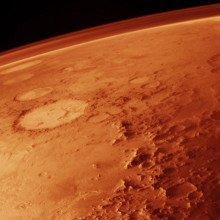
56:05 - Could we Introduce Life to Mars?
Could we Introduce Life to Mars?
We put this question to Catharine Conley, NASA's Planetary Protection Officer... Catharine - Firstly, we know that there's life on Earth that could survive in similar environments on Mars. There are organisms that live deep beneath the surfaces of South Africa that live on the radioactive decay of the rocks around them. If they were put in a similar location on Mars, they would certainly be able to survive there. There are also lichens and other organisms that at least can survive and many of the aspects of the environment of Mars that we can mimic in labs on Earth.
People have done studies to try and understand how long it would take and what do you need to do to terraform life on Mars. First, you would need to warm up the planet a little bit and then you would introduce organisms that could change the atmosphere, photosynthetic organisms that would breakdown the carbon dioxide and turn it into oxygen so that humans might be able to live there. That process would take about 100,000 years. So, it is possible certainly to terraform Mars. We have organisms on Earth that could probably live there with only a small amount of tweaking.
Hannah - So yes, modelling predicts that we could terraform Mars with life from Earth. But do we want to terraform it? Back to Cassie, whose job it is to protect our planets.
Catharine - My job as Planetary Protection Officer is to make sure that NASA does not contaminate Mars with life from Earth. Because we want to study life that might be already on Mars, we don't want to introduce life until we have a chance to study what's already there. This is specified in the outer space treaty. Article 9 says that we will not cause harmful contamination of other locations or adverse changes to the environment of the Earth as we explore extra-terrestrial locations. And it's also a good idea from agency policy because the reason we're going to Mars is to look for life. And it's easy to find life on Mars. All you need to do is bring it with you.






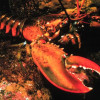



Comments
Add a comment